Well, hello! It has been some time since I’ve been able to sit down at my MacBook with a cup of tea and a free afternoon ahead of me. And that is because I have been true to my last year’s resolution (no more complacency), which has kept me in a state of constant motion. In re-reading my New Year’s entry from approximately a year ago (December, 2011), I sound more than a bit pleased with myself and with that year’s achievements:
“… by golly, I did it all and never got sick! True, it is now the end of the year and I am fighting an exhaustion unlike that of years past…..yet here I am, still able to type out another blog entry, and only slightly more short-tempered than usual. Must be that my definition of ”impossible” was far too cautious to begin with. From here on in, I will toss it in the trash bin! Or better yet, burn it in the January ritual burning ceremony that takes place by the river every year. Along with amulets and charms from the Year of the Rabbit, my over-cautious nature will go up in flames, with a great whoosh! And if I do pay the price in the form of a nasty cold brought on by over-exertion, I must grit my teeth, drink hot tea, and forbear any excess whining.”
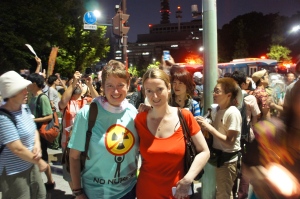
Most exciting rally in the Tokyo government district: summer, 2012. That’s me in the no-nukes t-shirt, and Jacinta in the sweet little red dress.
That was me, one year ago. Buoyed by my own enthusiasm, I began that New Year of 2012 with a burst of energy, and did my best to sustain it throughout the coming months. I leaped at opportunities (writing workshop? sure! wait…what?–it’s in a remote coastal village that’s way off my train line? well, I’ll get there somehow! ), became still more familiar with the streets of the government district in Tokyo (where all the anti-nuke protests take place, of course ), plunged into volunteer activities on my free weekends, and continued reading, networking, and blogging furiously. And of course, I continued working full-time at my cram school in Hadano. During the summer vacation, I toured the US by car with my daughter, checking out liberal arts colleges from coast to coast. We couldn’t be happier that she was accepted by and chose to attend the College of the Atlantic in Bar Harbor, Maine, where she will work toward a degree in Human Ecology. And now, at the start of the New Year of the Snake, I am paying the price that was not demanded of me last year (Year of the Dragon)–the nasty cold that settled in my lungs and knocked me flat. And what’s worse, it looks like I promised not to whine about it. That’ll teach me to brag, right?
But nasty colds mean a respite from work and from the demands of a hectic schedule; in short, they mean precious down-time. And down-time means a chance to catch hold of the many loose threads left hanging in the past two years of blogging and tie them together properly. “Whatever happened to the Mayor of Iitate Village? ” you might wonder. Or Naoto Matsumura, guardian of the forgotten animals of that same village? Or Yoshizawa-san, the farmer fighting to save his cows from slaughter in Namie Town? Or Yasuteru Yamada, elderly leader of the “Suicide Squad”? Or former Prime Minister Naoto Kan, who has disappeared from the media spotlight? I’d like to spend this afternoon and evening catching you up on some of the stories of individuals whose names became known nationwide after the 3/11 disaster that occurred nearly two years ago. In the interest of brevity, I’ll chose three from the list of characters just mentioned, leaving open the possibility of writing about the others in a later post.
So let’s begin with Naoto Kan, the former Prime Minister. Since the chaotic first week after the quake, Kan-san had been the object of both admiration and also of anger and outright scorn; there were few fence sitters. Although some saw Kan-san as a hero who did his best in the face of a crisis of unthinkable proportions, most saw him as a bull in a china shop, whose hot temper and unguarded words made a horrific situation much worse. Because the central government effectively betrayed its own people by not revealing accurate facts and figures and by failing to initiate a swift and comprehensive evacuation (among other things), Kan’s own reputation would never recover, whether or not he personally was to blame.
As Prime Minister, Kan was quick to renounce nuclear power ( “Let’s start from scratch” was his motto), quick to envision the worst and begin formulating drastic evacuation plans ( he admitted to having considered the evacuation of Tokyo in the first few chaotic days ), and quick to display anger and frustration in his public appearances. He spoke bluntly. He broke the rules of discretion and polite language. While the ground in Tohoku was still shaking, the former Prime Minister was busy shaking up a system that had not been disturbed for decades, at the cost of his own reputation. He was (and he would not deny it) attempting to force change. “I refuse to step down until you pass my bill!”, he declared (with wild eyes and a grin that appeared almost unhinged) in his last weeks of power, determined to launch a nationwide investment in renewable energy. The bill finally passed, and he was out of office in a flash. One of the most important things he did in the short time he hung onto power was to initiate the closing of the Hamaoka Nuclear Power Plant, in Shizuoka Prefecture. The Hamaoka plant was the first domino to fall, causing a chain reaction resulting in–for some months–a nuclear-free Japan. Two of the 52 power plants are up and running again, but the rest remain on hold. Before 3/11, this would have been unthinkable.

“Hey, guys, remember me?….no, I guess not.” (Kan-san standing on platform reading “Zero Nuclear Power”)
So where is Kan-san now? Well, according to a recent Japan Times article, he’s standing on a wooden box on the sidewalks of Tokyo, preaching his anti-nuclear message to the wind. Are you familiar with the Speaker’s Corner in London’s Hyde Park, where anyone can get up on a platform and preach about anything? If so, you know that the platform alone doesn’t guarantee an audience, and plenty of those long-winded orators look awfully lonesome. Even their mothers don’t make the effort to come out and listen. Kan-san did his best this past December, campaigning on the streets of Tokyo for anti-nuclear Mayoral candidate Kenji Utsunomiya and attempting to preserve his own seat in the diet as well. However, he not only failed to draw a crowd, but many passers-by did not even recognize him. Some who did shouted rudely, “You are a liar! You failed once, and you won’t get another chance!”
Just days before the national election, Kan-san’s campaign car crashed into a pole; Kan suffered a head injury, but even that failed to dampen his spirits or curtail his schedule. He looked a pitiful figure on public television, campaigning with a brave grin and a white bandage across his forehead. In the end, his candidate Utsunomiya-san was trounced and Kan-san lost his seat in Tokyo’s number 18 district. Somehow, he managed to cling to his seat in the diet, though, and continues his career as a politician, representing Japan’s out-of-favor Democratic Party of Japan.
Perhaps that was to be expected of a public figure who lists one of his hobbies as origami, and who is still waiting for the patent for his invention: a machine that calculates points for Mahjong. He’s a nerd, and he’s “kawatte iru” (strange in an unacceptable way). Japan wasn’t ready for him. But all this means nothing, really, and is a terrible underestimation of an extremely intelligent man, who understood the implications of the Fukushima disaster and was willing to fight the system, tooth and nail. Could those who taunted him on the street corner even imagine what it must have been like to be in charge of a country spinning out of control? And to have no blueprint to work from? How about some respect and appreciation, no? After his brutal rejection by the Japanese public, the former Prime Minister could have gone abroad to lick his wounds and retired from politics altogether….yet he didn’t. He’s like the Energizer Bunny in the old battery commercials. Naoto Kan is on facebook, and I have friended him, figuring he needs all the friends he can get.
Now let’s travel up the coast, from central Tokyo to the rural town of Namie, where Masami Yoshizawa, whose farm lies square in the heart of the evacuation zone, refused to desert his cattle after the hydrogen explosions that rocked Fukushima. I wrote in some length about this charismatic and determined man in a post called “A Tale of Two Farmers”, back in July of 2011. At that time, Yoshizawa-san, the former manager of a large and profitable cattle ranch, was struggling to maintain the ranch despite the contamination of the land, the abdication of the ranch’s owner, and a government edict to euthanize his herd. The cows, worth as much as $13,000 per head before the nuclear disaster, were now worthless in a monetary sense, yet Yoshizawa refused to either cull the herd or abandon them to their own devices. Obtaining a renewable permit to enter the no-go zone on a weekly basis, he continued to feed them with contaminated hay, picking up stray cows from other ranches along the way and adding them to his herd. Why? It was his own private resistance movement; he refused to desert his cows as the central government had deserted the people of Namie Town. Here’s a video of Yoshizawa-san, taken by Ed Koziarsky and Junko Kajino, two independent filmmakers from Chicago (see more of their work on the Uncanny Terrain site):
At the time the above video was taken, Yoshizawa-san feared that in six months time his cows would have eaten all the available grass on the ranch and would be nearing starvation. That was the terrible period of time when livestock within Fukushima’s evacuation zone were dying in large numbers on a daily basis, some still locked in their stalls and abandoned, unable to escape and forage for food. Photos that appeared on the internet were appalling. Yoshizawa-san was there in person to witness this death by neglect (though he blames the government, rather than the farmers), and he determined that the cows of his own herd would not fall victim as well. Though they had been contaminated by the wind-born radiation from the initial hydrogen explosions and had been consuming contaminated hay and water, he vowed to let them live out the rest of their natural lives in the evacuation zone. In doing so, he committed himself to the risk of long-term low-level radiation exposure as well. For the record, he is unmarried and has no children.
So, let’s fast forward, and see what’s happening at the ranch in Namie these days. Are the cows still alive? Has Yoshizawa-san kept his promise? Well, what do you think? Yes, and yes. It only took a bit of poking around to find that he is now somewhat of a celebrity, with his own blog and with a new name for the ranch: “Kibou no Bokujyou”, or “Ranch of Hope”. The Asahi Daily Newspaper reported last May that he was battling authorities who wished to check and approve of his blog posts and to prevent members of the media from visiting his farm. “Cattle farmer in no-entry zone battles muzzling of information!” read the headline. Apparently, the muzzling of Yoshizawa-san was unsuccessful, as shortly after that the Uncanny Terrain filmmakers did another brief interview with the loquacious farmer (see the film clip “Four Farmers“…he’s the second one). Never camera shy, Yoshizawa appears confident and speaks eloquently about fighting radiation, refusing to desert his hometown, and working toward a rebirth of Fukushima. “Nuclear energy and agriculture,” he says, “cannot coexist.” He is actively promoting renewable energy.
Yoshizawa-san’s blog (written, of course in Japanese, but sometimes with English translations following), however, reveals another side of the farmer. Along with determination and righteous anger, he carries with him a constant sadness. As of last October, in spite of his best efforts, cows on his farm were dying at an alarming rate. Diarrhea, runny noses and skin disease suggested compromised immune systems, whether caused by lack of nutrition, the spread of disease, or the effects of radiation. Yoshizawa blames it on what locals are calling the “Fukuichi Syndrome” (Fukushima Daiichi Nuclear Power Plant Syndrome). In a particularly disturbing entry from October 10th, he re-names the Ranch of Hope as “Ranch of Despair”. He describes his feelings of trepidation as he visits the barn each morning: “Yesterday, three died. Four, the day before yesterday. How many would be dead this morning? I don’t want to step foot into the barn.” Yoshizawa-san also echoes a sentiment that the former Prime Minister could certainly relate to, confessing, “I don’t want to acknowledge my own lack of power.” If this man could will his cows back to health, there is no doubt that he would. Because he cannot, he rails against the government, who have not intervened to help, but only to hinder. And the scientists that he hoped would investigate the effects of radiation on his cattle have not materialized….the potential subjects will die without being studied.
Fast forward again to the new year, 2013. A BBC video about the Fukushima 50 was just released that also focuses on Yoshizawa-san, who is still fighting. As of January 3rd, his herd has increased from 300 to 400, and he continues to care for them with the help of outside donations and support. Despite setbacks along the way, he’s held true to his original promise of keeping alive the cattle who remain for him a symbol of the nuclear disaster. For their sake, for the sake of the animals who did not survive, and for the sake of the farmers who whose livelihood has been taken from them, he goes back and forth into the evacuation zone to feed his herd of “worthless” cows. Where once he saw cattle as profitable assets, he now feels an affinity with the abandoned animals. And every month without fail, he takes his show on the road, driving his personal megaphone-equipped van to Tokyo to stand on a street corner (again–the former Prime Minister can relate) beside a life sized model cow. “Don’t forget the farmers of Fukushima!” he shouts at passers-by. “We’ve been betrayed, and we need your support!”
Lastly, I’d like to focus on Yasutera Yamada, the internationally-lauded organizer of the “Skilled Veterans Corps”, a group of over-60 men who were ready and willing to assist in the clean up of Fukushima Daiichi. I first wrote about the group in a post entitled “Will You Raise Your Voice?” , in May of 2011. Not just random volunteers motivated by a spirit of self-sacrifice, these were former civil engineers and builders (one member had assisted in the construction of the plant itself) eager to lend their know-how and assist in speeding up the dangerous and delicate process of decommissioning the crippled reactors. Work on many areas of the reactors had been delayed by continually high radiation levels; this posed no obstacle to Yamada-san and his colleagues, who argued that they would die of natural causes before radiation-induced cancer had time to develop anyway. If they could get in to the most dangerous areas and begin working, they reasoned, the whole decommissioning process would move more swiftly. Yamada, a 72-year-old who had already survived cancer, made news shortly after the nuclear meltdowns for his fearless offer. The offer was considered, but never accepted.
So has all the fuss died down? Have the members of Yamada-san’s Veterans Corps disbanded and given up on their dream? Having seen nothing in the news lately, I did a quick search on the net and found an article by former diplomat Akio Matsumura from August, 2012. Clicking on the link, I was surprised and pleased to see a photo of Yamada-san, age 73 at the time, touring the U.S. ! Convinced that Japan’s nuclear contamination issue was affecting the world at large, Yamada attempted, over the summer, to convince officials in the U.S. to put pressure on the Japanese government to support his plan. His group of skilled veterans is now 700 members strong; they are still ready and willing to jump into most dangerous areas of the nuclear reactors and put their expertise to work for the benefit of the nation and–by extension–the world. “Don’t risk young lives!” (they say) “This is our work!” They are not motivated by money, but by the desire to be part of a practical solution to a problem they believe to be wildly underestimated by TEPCO, the government, and the people of Japan. Yamada scoffs at TEPCO’s estimation of 40 years for the completion of the decommissioning process. Fifty years is more accurate, he claims, and in that time Japan’s food chain will have become thoroughly irradiated, presenting further risks and complications.
Perhaps Yamada-san does not see himself as a hero, but his fans both in Japan and overseas view him as one. And whether or not the members of the Skilled Veterans Corps are successful in their proposed mission, they have chosen to pursue something that brings meaning and purpose to their lives, rather than taking it easy on the golf course. I hope their grandchildren are paying attention. Finally, let’s hope that the former Prime Minister and Namie Town’s Yoshizawa-san continue their good fights as well. Thank you for reading, and take care in the winter cold. Whatever your good fight is, don’t give up on it.
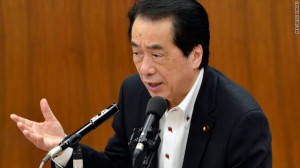
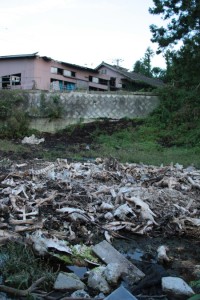
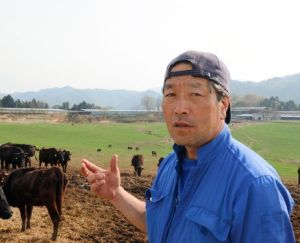

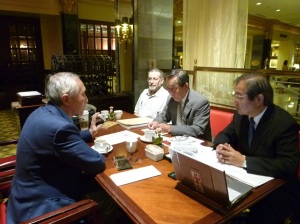
Many in Southern California (and other locations) are following what is going on in Japan but sadly the Japanese Media is gagged by the “utility gangs” with or without the approval of the Japanese Government!
The burning of radioactive debris continues to poison the planet’s atmosphere and the leaking, leeching radioactivity continues to further pollute the Pacific Ocean around Japan only to be spread across the Pacific like all the millions of tons of Fukushima Debris. There are studies that now say the coastal waters off the west coast of the USA and Canada will have radioactive pollution numbers similar to Japan in 6 or 7 years because of the dumping that is going on in Japan! http://enenews.com/report-nuclear-pollution-from-fukushima-to-hit-u-s-in-2015-impact-strength
Consider moving and Good Luck Japan
Hi Ruth. I always enjoy reading your posts. I was wondering… in you, 13 Jan 2013 post, you write “no more complacency”. Do you think that complacency was a bit of a time for a healing process after 3.11? Are you now somewhat renewed and more willing to face the future? If so, I share the feeling.
Keep up the good work!
Hey there, uhoh (san)! Actually, the “complacency” was myself before 3/11. Since those first few months following the quake, I have not allowed myself (nor been tempted ) to become complacent. My healing process has been my work, since teaching small children leaves no time for depression or despair and refreshes me every day. The future scares me to death, but I’m ready to face it. Not running from it, at any rate. Glad to hear you’re feeling renewed as well. Will you be in Tokyo for the 3/11 rally this year?
Ruth, great blog, glad to know what happened to important people. Those stories are never over, but few follow them. Thanks.
Thank you for keeping us informed, Ruth! I lived in Japan from 1985-2000, six years in Tokyo, six in Miyamacho, in Fukui-ken. Please keep reporting on Fukushima. Consider joining Fukushima Response on Facebook, so we can see what you’re posting too. I now live in the north bay (SF bay area) so we’re being affected too.